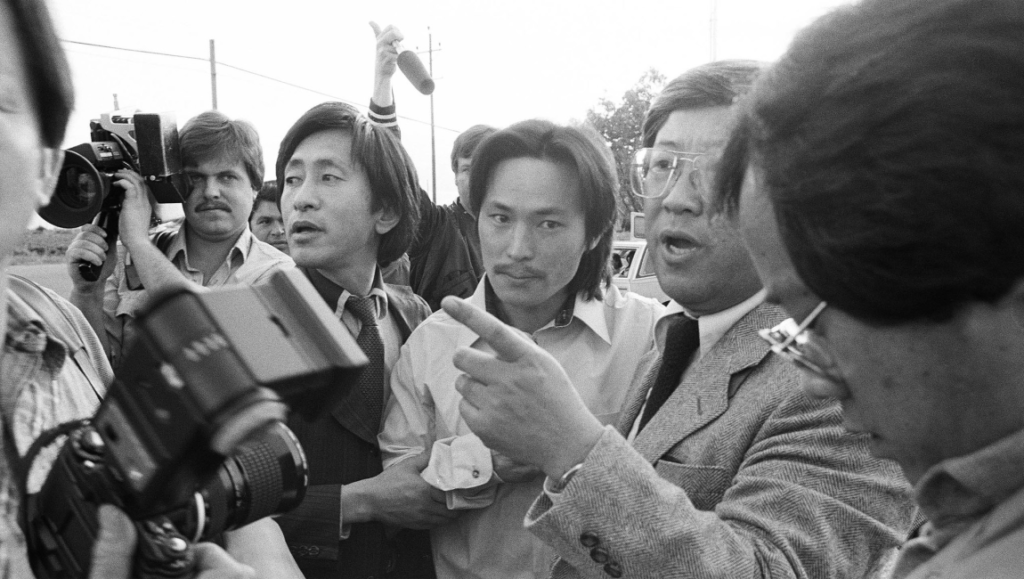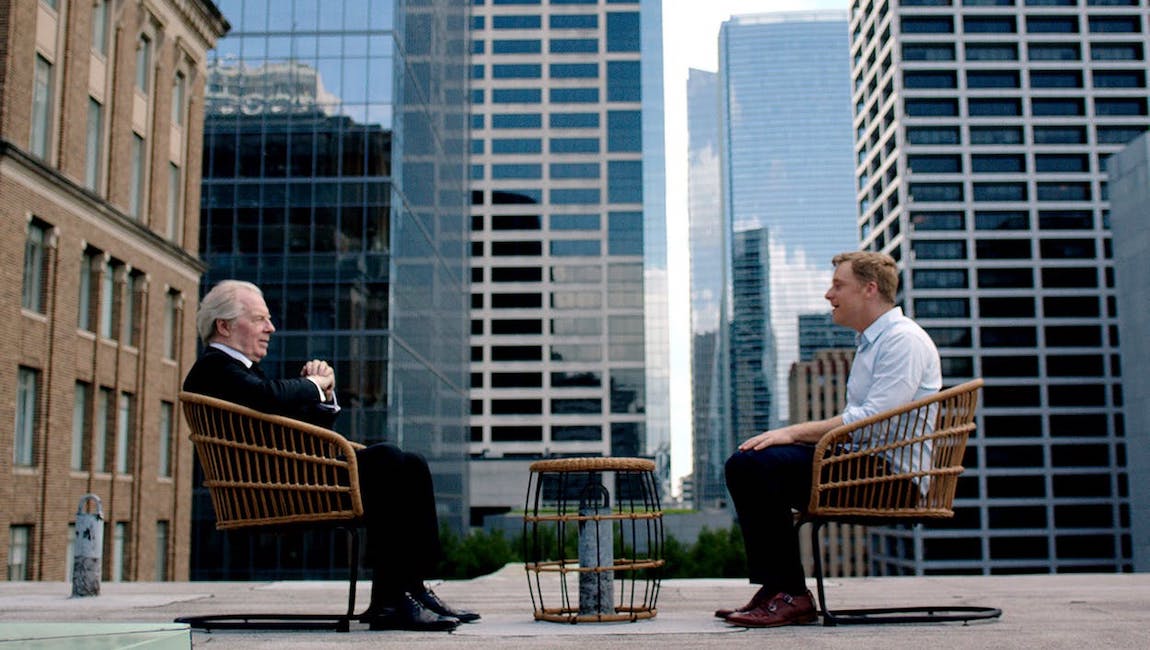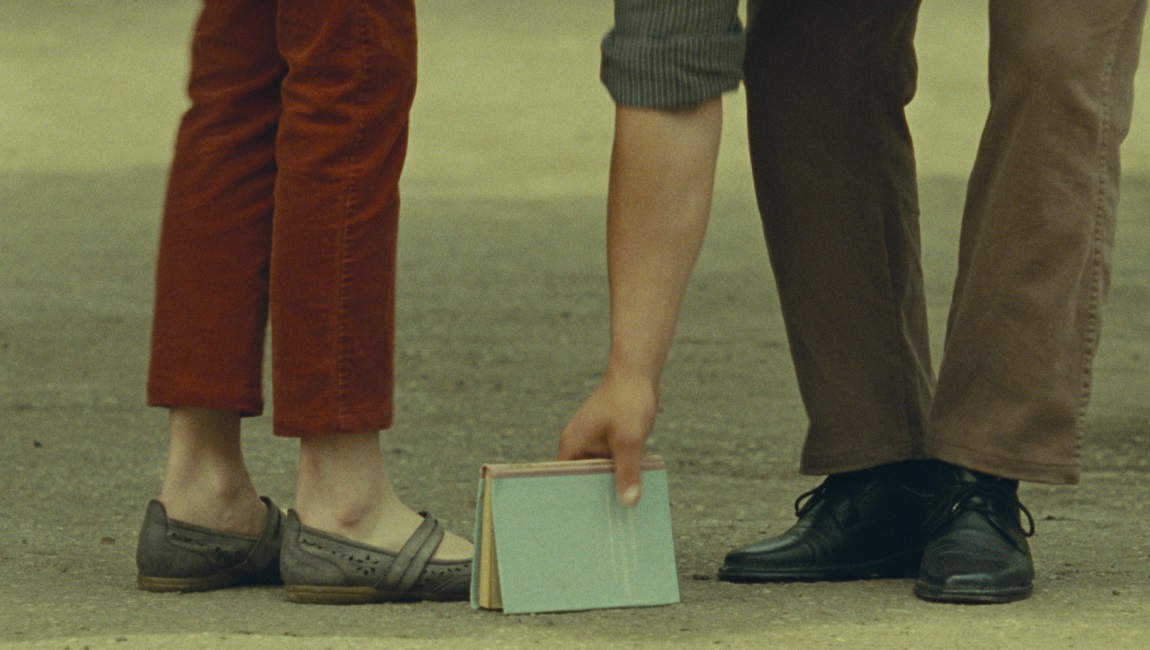Emily the Criminal
Anyone not already convinced that Aubrey Plaza is one of the most fascinating screen presences working simply isn’t paying attention. Few other actresses possess a more carved-out presence, built from a distinctive wry-dry charisma and comedic instincts that frequently flirt with discomfiting anti-humor, which makes a turn toward more dramatic material both inevitable and considerably promising. Ingrid Goes West and Black Bear jointly offered an instructive look at this progression, from pitch-black comedy to something more psychologically nuanced (though still cushioned with a certain genre-ish texture), each submitting further evidence of the actress’s singularity. It’s all the more unfortunate, then, that Emily the Criminal, a would-be taut thriller comfortably positioned to continue Plaza’s evolution and actorly exploration, so mistakes straightforwardness for sleekness, blandly shaped when not being energized by Plaza’s superhuman effort of placing the whole enterprise upon her game shoulders.
Which is to say, the film’s sum is a largely mixed bag of personality and anonymity. Tracing Plaza’s Emily, saddled with debt and unable to find stable work outside of her catering shifts due to a minor criminal record, as she immerses herself in the world of dummy shopping and increasingly internalizes a specifically American greed, John Patton Ford’s film cribs from a certain ‘70s thriller template without juicing the familiar beats in any appealing ways. There’s some detailed texturing early on that keeps proceedings interesting for a while, spending time on the minutiae of the criminal enterprise as Emily is folded into the seedy world, but as the film moves into a back half that mostly seeks to further ratchet the tension and danger of Emily’s spiral, it plays more like an enervated Safdies joint, sans grime. It all smacks of serious filmmaking, never unaccomplished but frustratingly too content to skew toward “good taste” for a film of this ilk. Certainly, that’s at least partly by design, the film’s rhetoric commenting on a classier, professional underworld that takes its cues from the sanctioned criminality of American capitalism’s wealth class. But the effect is mostly flavorless, with Emily the Criminal never indulging the sleaze that would help sell it as a purely genre work nor sufficiently plumbing its discourse for depth rather than mere topicality.
Like Plaza, Theo Rossi does his best to elevate the material, playing Emily’s handler as a chip-on-his-shoulder beta, a man perhaps more ill-suited to the work than those he recruits, soft around the edges. But as it goes with the rest of the film, his force of presence likewise dissipates as the film slogs to its winking conclusion, the character too underwritten to engender much investment by the time his climactic sequence arrives. Plaza, for her part, is the only consistent element here, pitching her familiar acidic comedy toward something more manic, sliding easily between naif and self-destructive fatalist and doing her best to keep the narrative on appealingly unsure footing. Still, there’s only so much she can do. And while Ford seems committed to exposing the ethics of American capital as not blurred but obliterated, a system capable of making criminals of anyone looking to succeed, the material feels notably anemic. Emily the Criminal’s minor set pieces and few suspenseful sequences don’t do much to undermine this reading, pleasantly grounded and low-key in a vacuum but reinforcing the film’s general staidness in function. Plaza does her best to upset this inertia, and there are few better suited to build the heart of your film around, but there’s simply not enough of a pounding pulse here to keep Emily the Criminal from slipping into dull torpor.
Writer: Luke Gorham
Free Chol Soo Lee
Calling Free Chol Soo Lee timely is almost an understatement. The directorial debut of Eugene Yi and Julie Ha, it’s a documentary dedicated to the life of Lee, a Korean American living in San Francisco’s Chinatown who, in 1973, was framed by the police for the contract killing of a Chinese gang leader and served the next ten years of life in prison, with five on death row for a prison killing in self-defense. The efforts to free him were enacted on both the national and international stage, as a Defense Committee was formed to raise attention and work on securing a trial and proper representation for him, while he himself took on an almost iconic form as the symbol of Asian-American injustice.
In order to draw out both the Kafkaesque situation (invoked explicitly in the film) and the genuinely stirring sense of solidarity that coalesced, Free Chol Soo Lee tells Lee’s story from essentially cradle to grave (he died in 2014) while also constantly bringing in key figures that recur throughout the film, including close friends, journalists (like his first advocate K.W. Lee), and attorneys. Many of these people, including of course Lee himself, are largely represented through archival interviews and recordings, though Lee’s thoughts about himself and his predicament are compiled from his notes and rendered in voiceover by Sebastian Yoon.
The one deviation from this chronological march is an enlightening one: Free Chol Soo Lee begins immediately with Lee’s immersion in Chinatown and his arrest, before leaping back to his birth on the occasion of his first interview with K.W. Lee. Yi and Ha very much establish their film as an investigation of sorts, making the progression of details and characterization of both legend and movement come to life in the assemblage of archival footage and voiceover; there’s a palpable sense of melancholy that comes through in Lee’s resignation to his circumstances, his own navigation between the confidence and gratitude he shows in his charismatic interviews and the doubt over his self-worth in prison.
All of this comes to the fore in Free Chol Soo Lee’s final act. Once Lee is freed from prison, he suffers from the whiplash between the isolation of death row and the celebrity he has accrued, and once the world tour dries up, he falls prey to addiction and an inability to integrate into the society that had worked to free him. This part of the film, thankfully, sees his struggle not as a failure of moral character, but as a symptom of a less obvious systemic failure, one that makes maintaining even a single nonprivileged person’s lifelong wellbeing an inordinately difficult task. The final part sees him reformed in the aftermath of a botched arson attempt and bringing hope and passion once again, but the feeling of grief continues to permeate. There’s certainly much still unexplored — the almost total lack of Chinese interview subjects, everyone’s choice to refer to Lee by his Americanized name order — but Yi and Ha’s act of excavation, of linking Asian-American oppression and resistance to the modern day without ever explicitly bringing this decade into the conversation, is deeply moving.
Writer: Ryan Swen
Am I OK?
Am I OK?, the directorial debut of Tig Notaro and Stephanie Allynne, is a simple, mostly familiar coming-out story that follows Lucy (Dakota Johnson), a shy, insecure 32-year-old who gradually embarks upon a journey of self-realization and sexual awakening after embracing her previously hidden attraction to women. No longer pursuing her passion as a painter and instead now working as a receptionist in a spa, Lucy operates as a loner navigating an easy comfort zone, a woman who, apart from her lifelong best friend Jane (Sonoya Mizuno), has never really experienced profound intimacy with anyone (men have been relegated to only handshakes). But boozed and confused, Lucy decides to reveal her secret to Jane — who recently dropped a bombshell about moving to London in six months — and later shares more with her about a secret crush on flirty masseuse Brittany (Kiersey Clemons). Given this setup, it’s easy to see the predictable places Lauren Pomerantz’s thin screenplay will take the film: Lucy will contend with the newfound mess of her emotional life and her struggles to find solid footing.
It’s also obvious from the jump that Notaro and Allynne’s main concern is in crafting a heartfelt, pleasantly cringey rom-dram that hews much closer to a lived-in experience than the bolder contours of more dramatized narrative. For better or worse, then, things stay intentionally relaxed in Am I OK?, a low-ceiling effort with specific goals in mind. To that end, the film — which in many ways takes a coming-of-age shape despite detailing the story of a thirty-something — relies heavily on a series of (usually) amiable, one-on-one conversations between characters, most frequently Lucy and Jane. The problem is that as the film progresses, this low-key, mumblecore-ish quality begins to feel flat in the absence of more substance, scanning more like a collection of no-stakes, somewhat rhythmless chit-chat than a proper narrative. Even at a short 86 minutes, the effect is dulling.
But within the film’s breezy small scale and its slice-of-life storytelling, most of which takes place in various bougie interiors — restaurants, apartments, yoga classes — what registers is the outsized on-screen appeal of the gifted Dakota Johnson, her playfulness and warmth easily commanding the camera (and the attention of the viewers), her performance both genuinely hilarious and movingly vulnerable. It’s something of a mixed blessing for the film, however, as her wonderful work here places the rest of the actresses (and their underwritten roles) firmly in her shadow, leaking energy whenever the narrative wanders (specifically, during a subplot involving Jane). This enervation extends even to the film’s would-be, lightly erotic scenes between Brittany and Lucy, which instead mostly play out in cheesy fashion (in one scene, Lucy blushes and excitedly texts Jane, “Brittany just massaged me”).
Minor quibbles to be sure, but for as harmless as Am I OK? is, it’s still hard to rock with on either a character or narrative level, both of which remain notably underdeveloped. Notaro and Allynne capture a gauzy, bittersweet emotionalism that proves more appealing, but the film’s aesthetic qualities never really become more than that — though some scenes do suggest a little visual pluck, such as a couple where characters are set horizontally across the compositions. But like the film’s protagonist who pines for some profound self-discovery (and which toward the end unconvincingly wraps up via too-hasty execution), the co-directors’ work here can best be regarded as a good effort, its unassuming, observational nature inoffensive but offering little to the canon of queer cinema. Both character and film would have likewise benefitted from more ambition, from taking risks that would leave easy comfort zones behind. Taking the film’s title as a question of the viewer, then, the answer is yes: Am I OK? is exactly ok, and not much more or less.
Writer: Ayeen Forootan
Riotsville, USA
It’s almost more fascinating to note the array of footage that isn’t in Sierra Pettengill’s daring archival film Riotsville, USA than the materials that are. Specified as being compiled solely from footage shot by U.S. military or broadcast news, the film traces a path through both the concrete and the indefinite, making unmistakable the connections between 1960s “innovations” in policing and the all-pervasive threats that legitimate protests face at a moment’s notice today. But despite its confrontational bluntness and bleak subject matter, the film is anything but didactic.
Riotsville, USA refers to a certain twist on the Potemkin village that the American military perpetrated in the ’60s. Shoddy miniature towns built on military bases, all plywood facades and childish signage, that served one sole use: to provide the army and the police an area to practice riot control and suppression tactics. As numerous commanding officers watch, soldiers play-act at being anti-war protestors before being effortlessly quelled (to the officers’ applause). An especially nasty recurring gesture is laughter at a man pretending to be a Black Power agitator, his more open outbursts amusing the people in charge.
If Riotsville, USA had confined itself to this approach, transforming propaganda into procedure, it would already be worthwhile. But Pettengill goes much further, at least within the span of about five years. The inciting element is the formation of the Kerner Commission by Lyndon B. Johnson in 1967 for the purpose of analyzing the many riots that had occurred the previous summer; though composed of the most centrist and milquetoast politicians possible, it nevertheless handed down a damning portrait of racial and economic inequality that made such disturbances inevitable and advocated for an effort greater than the Vietnam War to combat this climate.
While the immediate connection is made explicit, in its note that the only spending policy that Congress chose to enact was to greatly increase federal funding for police budgets, Riotsville, USA spends a good deal of time looking at the perspectives of those who had some voice on the national stage, especially via a few panels on the Public Broadcasting Laboratory, a PBS predecessor whose funding was withdrawn in response to supposed liberal bias. From a fiery preacher to a police captain who cites Reader’s Digest as a well-respected publication, all their actions and words are explicitly contextualized within a certain apparatus of thinking, in dialogue with the apparatus of control being developed nationwide.
Along with this mountain of footage, assembled deftly by Cameraperson editor Nels Bangerter, Pettengill enacts numerous interventions, breaking the film’s ostensible diegesis and directly addressing the viewer’s understanding. At unexpected intervals, voiceover written by Tobi Haslett unfurls over stunningly treated footage — whether it be odd morphing, pointillist focus on black dots amid white newsprint or red-green-blue television ray, or circular vignetting — which foregrounds the poeticism suggested by Jace Clayton’s electronic score and the sheer surrealism of soldiers parading in an empty town, moving between objective facts and media analysis. More prevalent and just as effective is the use of brutally frank intertitles — often only a single short sentence — which provide information so damningly direct that any further explication could upset the balance.
Riotsville, USA uses its last third to consider another significant 1968 convention: the Republican National Convention in Miami which nominated Richard Nixon, or rather, the riot that happened in nearby Liberty City, a Black neighborhood repeatedly ignored and downtrodden by its affluent neighbors. In this tracing of an alternate view upon the official history, and a final analogy which lays all idealizations of a city, utopian and fascist, to bear, Pettengill caps an incisive examination, as hypnotic as it is fervent.
Writer: Ryan Swen
All That Breathes
As climate change documentaries proliferate at a remarkably brisk pace, director Shaunak Sen’s new non-fiction film All That Breathes eschews blunt didacticism and functional, PowerPoint-style pedagogy for an altogether more low-key, elliptical approach. In Delhi, India, often referred to as the most polluted city on Earth, the Black Kite bird has become emblematic of mankind’s systematic obliteration of the natural world. These once ubiquitous creatures have evolved to live amongst urban detritus but now literally fall from the sky, dead or dying, at an alarming rate. Dubbed “The Kite Brothers,” Mohammad Saud and Nadeem Shahzad have made it their life’s mission to save as many of these birds as possible — a noble calling that becomes an increasingly precarious proposition as the film progresses. Sen has constructed his film as a kind of microcosm of the world at large, following Saud and Nadeem’s work at ground level while larger conflicts beyond the film’s scope continuously seep in around the margins. It ultimately results in a philosophical question — what good is it to save some birds when the entire world is collapsing? How Saud and Nadeem each navigate this specific dilemma becomes the main dramatic crux of the film.
Working with cinematographers Ben Bernhard and Riju Das (who took over for Bernhard when COVID restrictions created a scheduling conflict), Sen captures the city as a playground rife with animal activity. Long, languid pans at street level reveal teeming hordes of rats; monkeys crisscross the city’s dense architecture, with individual shots becoming a crazy patchwork of intersecting power lines and closely packed lattice works. Mosquitoes flit across stagnant pools of water, while snails, turtles, and even pigs wander in and out of the frame. Tilting the camera up, the screen fills with the wide open expanses of a dingy, gray sky, masses of Black Kites circling above. It’s a kind of city symphony, at least at first. We eventually settle in and observe Saud and Nadeem at work, as they collect injured and sick birds, examine them, clean their wounds, and hydrate them. The pair are chatty, explaining how they came to care for these animals, and how they funnel money from their day jobs into keeping their makeshift animal hospital (literally a basement space, at first) open. The birds are positioned as a symbol of sorts (although Sen smartly doesn’t force it too much). Denied attention at veterinarian offices because they are birds of prey, the Kites mirror Saud and Nadeem’s own outsider status as Muslims in a mostly Hindu society. Indeed, the government’s anti-Muslim immigration ban in 2019 and subsequent protest movement becomes a backdrop to the narrative proper, with Saud and Nadeem first joking about living in the aftermath of a nuclear conflict with Pakistan before riots become a frighteningly real danger right at their doorstep. Nadeem dreams of leaving Delhi and traveling the world, while Saud seems content to continue their work with the birds. Eventually, they reach a crossroads, as Nadeem is accepted for post-graduate studies in America and Saud prepares to open a new animal hospital with long-delayed funding from international grants. It’s a bittersweet ending, the brothers separating with only a faint promise of reuniting in the future. But the work continues, and while their paths may diverge, the duo seems to be unwavering in their commitment. Ultimately, then, All That Breathes suggests a tentative hope for the future while still recognizing that our current situation is tragically untenable. The film’s strength comes in understanding that the cognitive dissonance required to recognize both of these attitudes is perhaps the cogent diagnosis of our 21st-century dilemma.
Writer: Daniel Gorman
Mija
There’s always an argument to be made over how to evaluate “discovering” an artistic voice, over whether it should come within the consideration of a film (or album, or play, etc.) as a whole, or if it should instead be seen in light of specific accomplishments that color the whole. By the latter metric, Isabel Castro, who makes her feature directorial debut with Mija, playing in the NEXT section, is arguably one of the true discoveries of this year’s Sundance.
This idea of discovery is apropos: Mija follows music manager Doris Muñoz, who began her career by bringing her friend Cuco, a Chicano indie pop musician, to stardom. The film begins as their relationship is starting to disintegrate, first brought on by the rigors of constant touring and communication problems, then the pandemic, which brings their business collaboration to an end. Castro then fluidly shifts focus to Muñoz’s next find, Texan singer-songwriter Jacks Haupt, whose music exists somewhere between R&B and hip-hop. Throughout all of this, Muñoz’s personal life remains coequal with her music industry work: she is the first American-born child of undocumented immigrants and is actively working to earn enough money to finance her parents’ green card applications so that they can reunite with her brother, who was deported five years ago. Jacks’ parents are also undocumented, and she experiences a good deal of friction with their expectations for her and her own artistic ambitions, which involves an extended work trip at Muñoz’s invitation to Los Angeles during her 21st birthday.
To capture all of this, Castro has made one of the most aesthetically pleasurable documentaries in recent memory, largely composed of hazy close-ups that remain closely tied to their subject, and which morph and adapt to the tenor of each scene. Muñoz is first introduced in the crowd of one of Cuco’s concerts, before the film slips into home movie footage, and this movement is carried out with a deftness that seems to carry action across decades. Jacks’ birthday celebration is even carried out with maximum glamor, fully indulging in the pleasures of the moment without seeing it as merely an end-all-be-all.
Mija isn’t a perfect film: After spending a good deal of time with Jacks, it seems to largely abandon her storyline in favor of Muñoz and the acceleration of her parents’ ultimately successful efforts. But there are moving storylines throughout: a wrenching phone call between Jacks and her parents is followed by a restorative park visit with Muñoz; the reunion between parents and son (and parents and birth village) is aching as much because of the long car ride down south as it is in the actual moment of contact. Over all of this hangs Muñoz’s voiceover, which nails some beautiful sweet spot between reverie and clear-eyed observation. Above all, Castro clearly makes Mija both her film and a true collaboration, one that follows the seeds of artistic practice and its indelible personal imprint with a generous eye.
Writer: Ryan Swen










